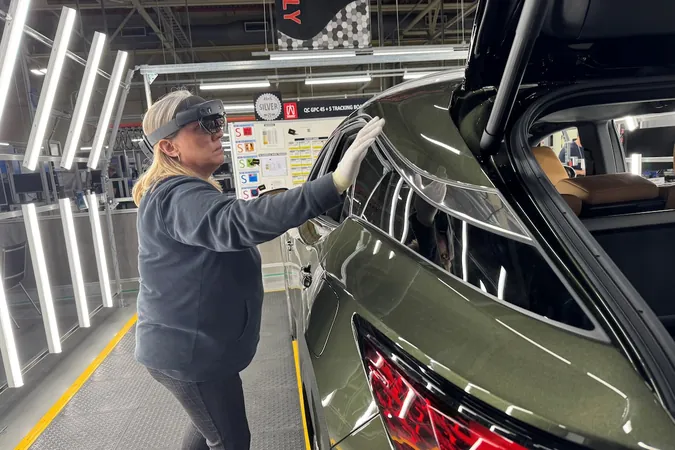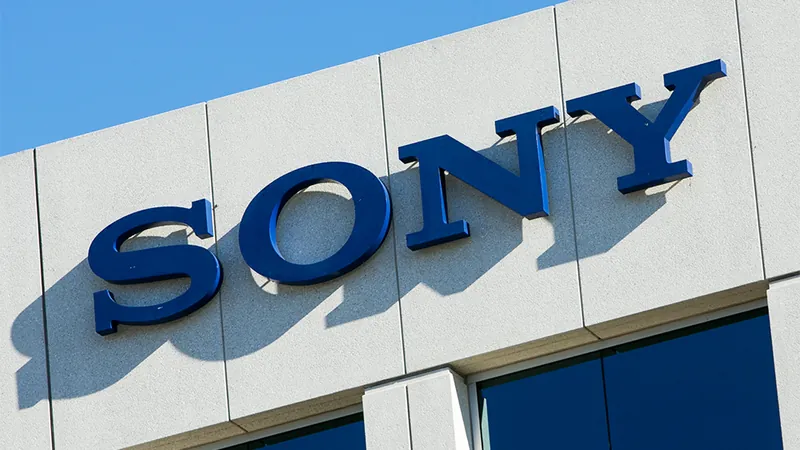
Toyota's Future in Jeopardy If Trump’s Tariffs Stick
2025-07-08
Author: William
Toyota Faces Tough Choices Amid Tariff Threats
As unpainted SUVs glide down the assembly line, an autonomous train zips by carrying bumpers, and robotic arms diligently weld body panels. At Toyota's TM-N north plant in Cambridge, Ontario, workers meticulously inspect car tops for flaws, ensuring the highest quality for the best-selling Toyota RAV4 in the U.S.
But looming over this bustling scene is uncertainty stemming from U.S. President Donald Trump's tariffs, casting a shadow over Ontario's auto industry — including Toyota’s operations.
Tariffs Hit Home: Impact on Production
In 2024, Toyota's three Ontario plants produced 533,000 vehicles, with a staggering 82% destined for the U.S. However, a hefty 25% tariff on non-U.S. content for cars made in Canada has put the pressure on Toyota's U.S. division. While the company recently raised prices slightly to offset costs, Scott MacKenzie, director of corporate and external affairs, warns that this trend is unsustainable.
What’s Next for Ontario Manufacturing?
Should discussions between Canada and the U.S. fail to eliminate these tariffs, Toyota might be forced into a difficult position: either hiking prices or making significant adjustments in Ontario operations. MacKenzie has hinted at potential changes but remains tight-lipped on specifics—making it clear that nothing has been decided yet.
This isn’t just speculation; evidence of tariff-related production cuts and layoffs at plants run by competitors is alarming. As the automotive landscape shifts, Toyota’s plants continue to operate at full capacity, limiting options for relocating production.
The Bigger Picture: A Diverging Path in Auto Production
While Canadian operations adapt to challenges, U.S. and Mexican plants of rival automakers have faced stark declines. For instance, Detroit's Big Three, known as the D3, saw their annual auto output plummet to 340,000 from 1.28 million in the last decade. In contrast, Toyota and Honda's combined production remains strong, showing resilience amidst turbulent times.
A Steady Ship Amidst Choppy Waters
Toyota’s success lies in its stable production strategy. Unlike many of its North American counterparts, the Japanese automaker maintains a steady output, aided by flexibility and a non-unionized workforce. This approach has allowed Toyota to meet demand without significant disruptions.
With plans to innovate further, Toyota is gearing up for a transition to plug-in and hybrid models of the RAV4, which will include locally produced batteries—a significant shift aimed at reducing dependence on imports.
What Lies Ahead?
As tariffs threaten to reshape the automotive landscape, the stakes are high for Toyota’s Canadian operations. Will the automaker be able to navigate these political waters, or will it find itself facing tougher challenges? As developments unfold, all eyes will be on Toyota to see how they adapt to these ongoing pressures while striving to remain a leader in the market.
In the words of President Trump, countries failing to negotiate may soon find their export costs soaring. The fate of Toyota and the Canadian auto industry hangs in the balance.









 Brasil (PT)
Brasil (PT)
 Canada (EN)
Canada (EN)
 Chile (ES)
Chile (ES)
 Česko (CS)
Česko (CS)
 대한민국 (KO)
대한민국 (KO)
 España (ES)
España (ES)
 France (FR)
France (FR)
 Hong Kong (EN)
Hong Kong (EN)
 Italia (IT)
Italia (IT)
 日本 (JA)
日本 (JA)
 Magyarország (HU)
Magyarország (HU)
 Norge (NO)
Norge (NO)
 Polska (PL)
Polska (PL)
 Schweiz (DE)
Schweiz (DE)
 Singapore (EN)
Singapore (EN)
 Sverige (SV)
Sverige (SV)
 Suomi (FI)
Suomi (FI)
 Türkiye (TR)
Türkiye (TR)
 الإمارات العربية المتحدة (AR)
الإمارات العربية المتحدة (AR)